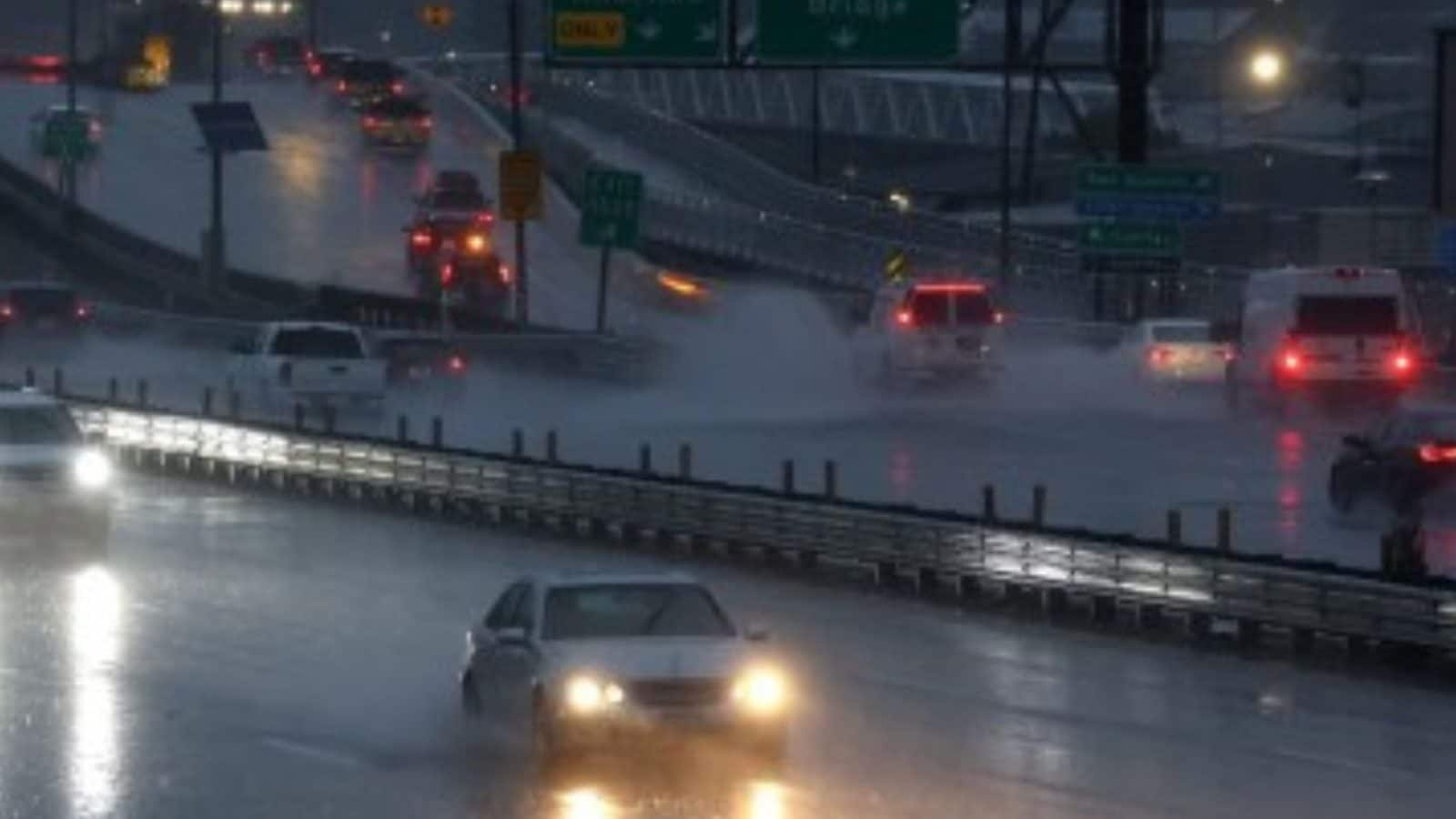‘Relentless Cyclones’ Continue to Batter US State of California
A “relentless parade of cyclones” hitting the US state of California was expected to shift farther to the north, the US National Weather Service said Thursday, as the region continued to struggle with massive floods and landslides.
At least 18 people are known to have died in the recent series of storms that have lashed the western United States, bringing rainfall levels not seen in 150 years to some places.
Communities have been washed out, powerlines toppled and roads blocked by rockslides as an endless deluge pounds the Golden State.
On Wednesday, a swathe of northern California was under a flood watch or winter weather advisory.
“The heaviest rains are expected to impact northwestern California through the next couple of days with a few inches of rain possible,” the National Weather Service warned.
A later advisory said the weather system would also impact other states in the Pacific Northwest through early Saturday.
That rain will come on top of weeks of downpours that have left the earth saturated, with rivers fit to burst and hillsides at risk of collapse.
In the town of Aptos, near Santa Cruz, residents were picking up the pieces after being inundated.
“It’s probably the worst flood that I’ve seen here since I’ve lived here, since 1984,” Doug Spinelli told AFP.
“Aptos Creek was flowing down so angrily, I thought it was going to rip out our little pedestrian walkway, and there were tree trunks being forced down the river, almost at a rate of about one every 30 seconds.
“It was amazing to watch how much debris and timber was flowing down the creek.”
California Governor Gavin Newsom, who visited weather-wrecked Capitola on Tuesday, said the relentless storms meant that even lesser downpours could be problematic.
“The number of inches of rain, and the intensity doesn’t tell the entire story,” he told reporters.
“We’re soaked, this place is soaked. And now just more modest amounts of precipitation could add as equal or greater impact in terms of the conditions on the ground.”
‘We will search until we find him’
More than 35,000 homes and businesses were without power in California early on Thursday, according to tracking site Poweroutage.us, and there have been tragedies across the state.
A five-year-old boy who disappeared in floodwaters in San Luis Obispo was still missing Wednesday.
Lindsay Doan was driving son Kyle to school on Monday morning when the family car was swept into floodwaters.
She managed to get out of the vehicle, but could not open Kyle’s door.
“He was calm. He was trying to say, ‘Stay calm, Mom,'” the boy’s father, Brian Doan said, according to the Los Angeles Times. “She was doing her best.”
When she finally got him out of the car they were separated by the current.
Nearby residents pulled her from the water, but Kyle had been swept down the creek.
“My wife feels very terrible surviving this and not him,” Brian Doan said.
“She did the right thing getting him out of the car. San Miguel Fire told me they saw the car had moved and it was pushed upside down in the creek.”
San Luis Obispo County Sheriff said they were still searching for the child, including with underwater teams.
“We will search until we find him,” spokesman Tony Cipolla told The San Luis Obispo Tribune.
Fatalities
According to a tally by the LA Times, the 18 confirmed dead in the state include drivers who have been found in submerged cars, people struck by falling trees, a husband and wife killed in a rockfall, and people whose bodies were discovered in floodwaters.
Winter storms are not unusual in California, which tends to get most of its annual rain over a fairly short period.
But the current systems — which have brought more rain to San Francisco in two weeks than at any time since 1866 — are vicious.
Scientists say global warming, which is being driven by human activity, is making weather events more extreme, with more violent storms and more severe droughts.
Despite the misery, the storms, which are expected to continue to rake California for another week, are bringing rain to a part of the country that badly needs it after more than two decades of drought.
But even the vast volumes of water that are falling are not enough to replenish depleted reservoirs and aquifers.
Shasta Lake, the state’s largest reservoir, was still only at two-thirds of its historical average for early January, water resources department data showed.
Read all the Latest News here
(This story has not been edited by News18 staff and is published from a syndicated news agency feed)
For all the latest world News Click Here

